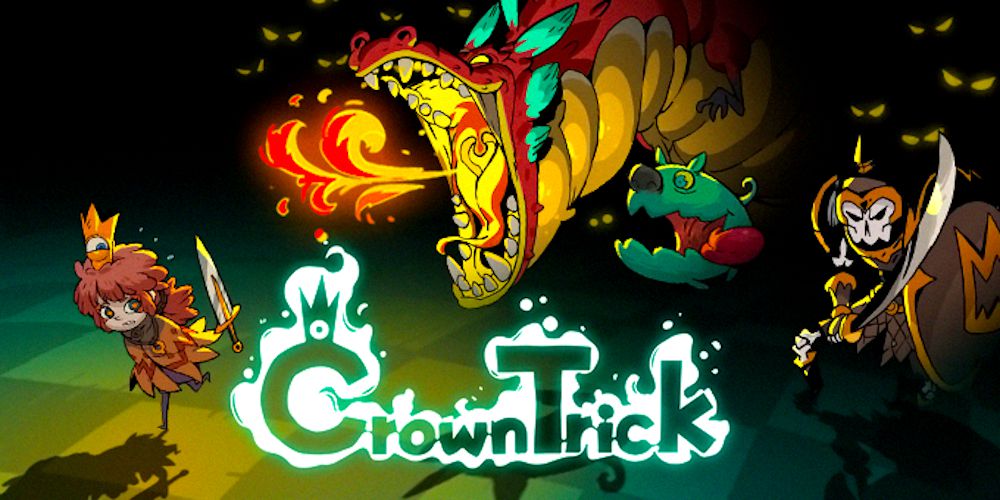Indie games and roguelike mechanics—name a more iconic duo.
Does the world really need yet another roguelite dungeon crawler? Hasn't procedural generation and forced replayability been done to death? Aren't we sick of it yet?
Well, if someone can figure out a way to do it in a way that feels sufficiently unique and fun to play... why not?
And Crown Trick certainly managed to do that. Having sunk several hours into this fresh take on tactical roguelite dungeon crawling, I'm left with one impression: Crown Trick feels a lot like the game I wanted Crypt of the NecroDancer to be.
It borrows several ideas, improves upon them, and adds in a few new ones to really make things interesting.
The Premise
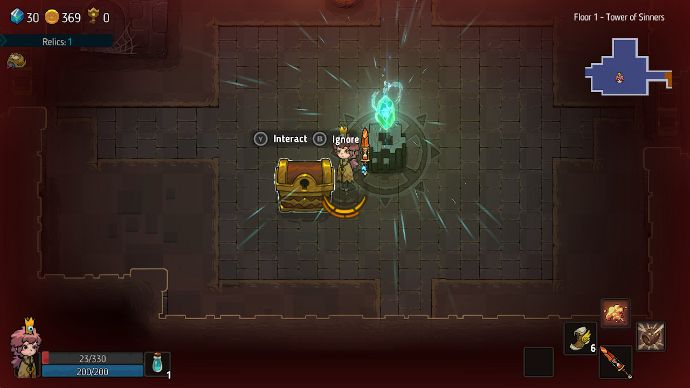
Crown Trick is a grid-based tactical RPG that has you exploring dreamscape dungeons in a floor-by-floor manner.
Dungeons are composed of procedurally generated rooms, where each room contains a battle, a challenge, a discovery, or an event that may impact your fate.
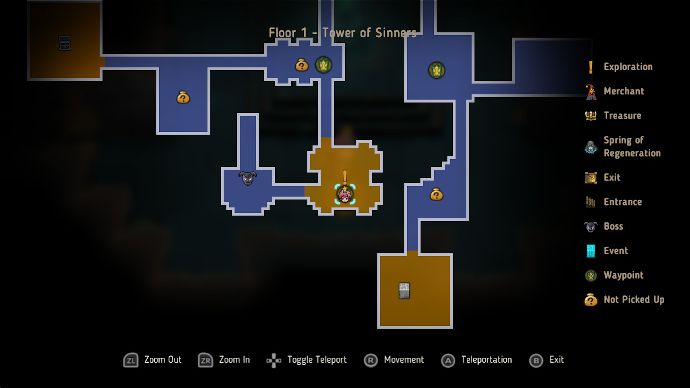
Battles in Crown Trick take place turn-by-turn: when you move, enemies also move. But they won't move until you do, so you can take as much time as you want to devise your strategy and execute your plans.
For those who have played it, think Crypt of the NecroDancer without the rhythm.
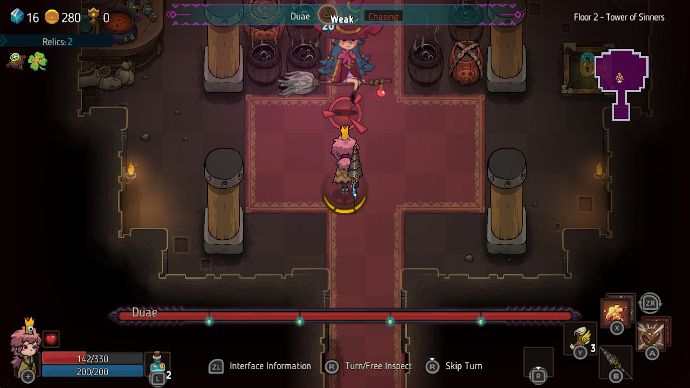
In addition to equipping a Weapon, you can also collect all kinds of Relics that grant passive bonuses and Items that can be used to perform various effects, such as temporary buffs, magical attacks, etc.
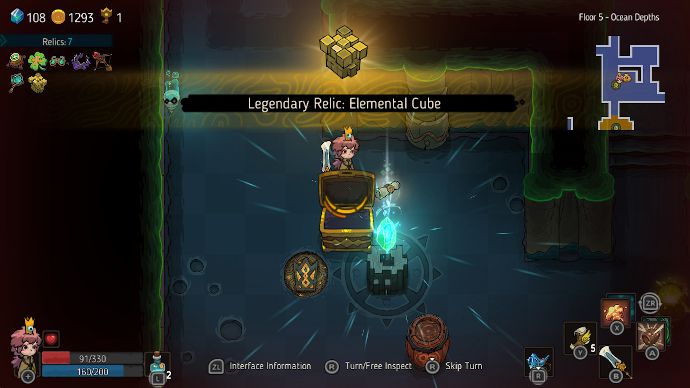
Most of your progress gets reset if you die mid-way through a dungeon, but there are some carryover aspects that remain permanently unlocked between runs. (Read more about "soul shards" and "blueprints" below.)
While Crown Trick isn't as handholdingly easy as some other roguelite games, it's far more tolerable than strict roguelikes with permadeath.
The Good
With tactical RPG combat starting to feel overplayed in the indie gaming realm, how does Crown Trick spice things up?
With a mixture of three gameplay mechanics that aren't anything special on their own, but together provide a unified experience that feels right:
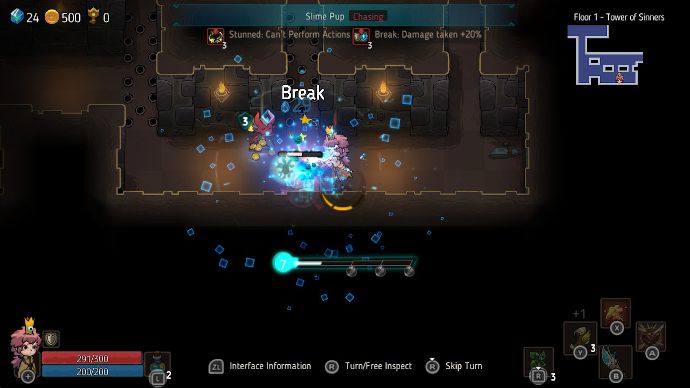
The Break mechanic gives every enemy a certain number of "break points" at the start of combat. Every instance of damage reduces their break points by one, and when their break points reach zero, they're stunned for a few turns and receive extra damage.
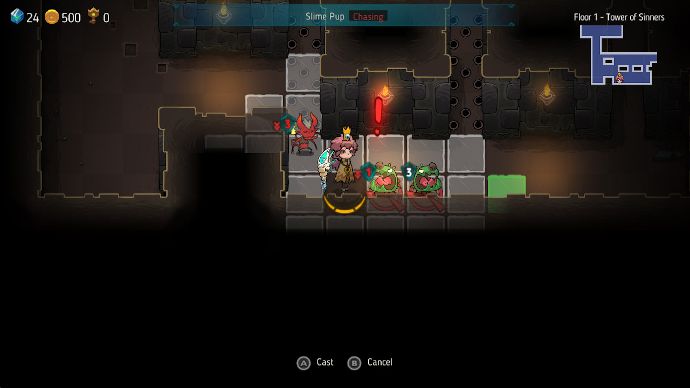
The Blink mechanic gives the player a limited number of short-distance teleports that can be used at any time. Blinking doesn't burn up the rest of your turn, so smart use of Blinks plays a critical role in escaping dangerous situations and positioning yourself to cause maximum damage.
The Elixir mechanic gives the player a limited number of health and mana recoveries per dungeon. Survival mechanics are important in any dungeon crawler, but balancing them can be tough when recovery happens via consumables, passive regeneration, etc. This is a simple but smart alternative.
I'm also a fan of the way Crown Trick incorporates elemental tiles into combat. Certain abilities can cause tiles to take on an elemental aspect for a set number of turns, and walking over those tiles can provide certain advantages or disadvantages.
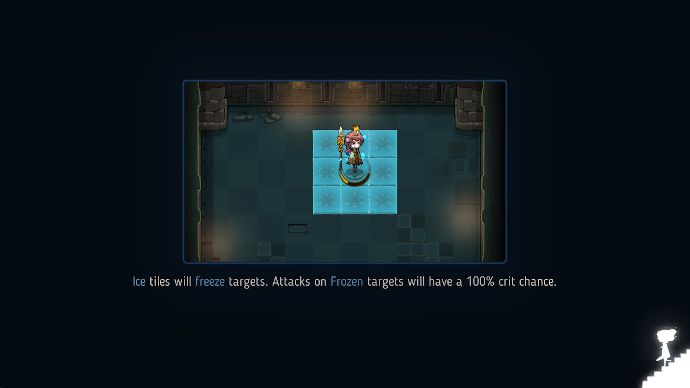
For example, walking through Fire tiles gives you a Burn debuff while walking on Water tiles make you more susceptible to physical damage. Electricity tiles prevent you from performing physical attacks whereas Ice tiles cause you to receive all attacks as critical damage.
Not only does this introduce some dynamics to how battles play out, it also adds a layer of strategic depth when it comes to playing around enemies and choosing your own methods of approach.
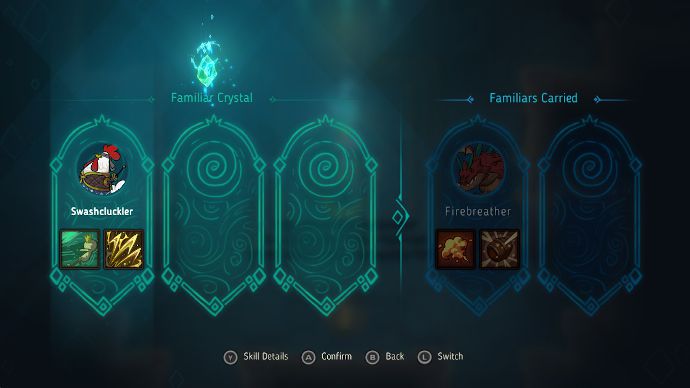
Crown Trick gets even deeper with its Familiar system. There are 16 different Familiars that you can encounter during your dungeon crawl, and each Familiar is basically a mini boss. If you defeat the encounter, you acquire the ability to use that Familiar's Skills. (Skills are magic attacks.)
But you can only equip two Familiars at a time, and each Familiar has two unique Skills.
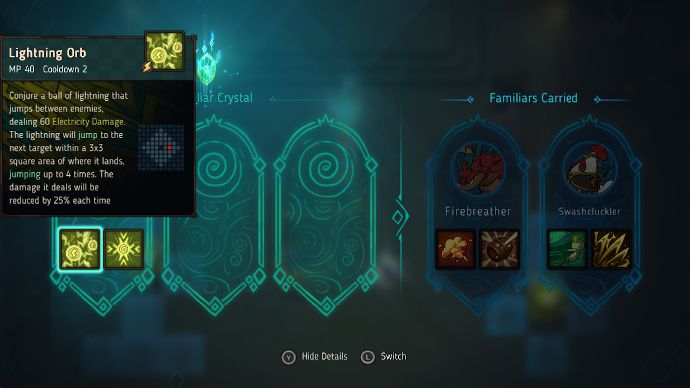
You can't equip Familiars whenever you want—you have to find the Familiar Room in the current dungeon, which gives you a choice to equip one of three random Familiars you've acquired. Or ignore, if you don't want any of them.
I love this system because it forces you to play with Skills that may not be your favorite, while giving you enough agency via the three-choice option that you never feel sabotaged by RNG.
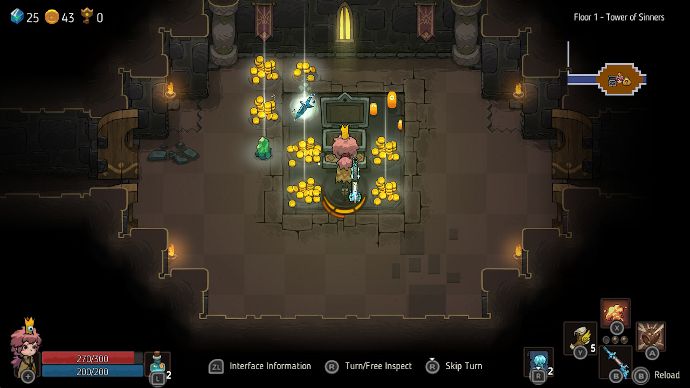
Throughout your dungeon crawls, you'll collect Soul Shards. These Soul Shards stay with you when you return to home base—either by completing the dungeon or dying—and you can spend Soul Shards to unlock permanent character upgrades.
But Soul Shards can only be spent at special shops that need to be unlocked by rescuing people you encounter in dungeons. Any unspent Soul Shards are lost when you begin a new dungeon. (Sounds a bit like Crypt of the NecroDancer, doesn't it?)
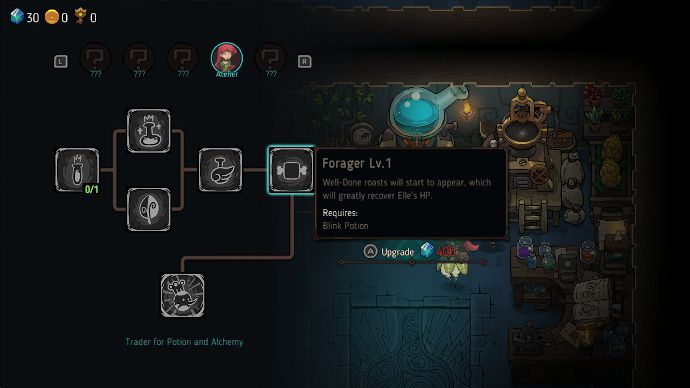
It's a well-balanced system that rewards longer runs—because you can only acquire Soul Shards by defeating Bosses, Familiars, and Challenge Rooms—and allows you to feel like you're making overall progress even when you've failed a run.
Carryover progress is why roguelites are so much more popular than roguelikes, after all, right?
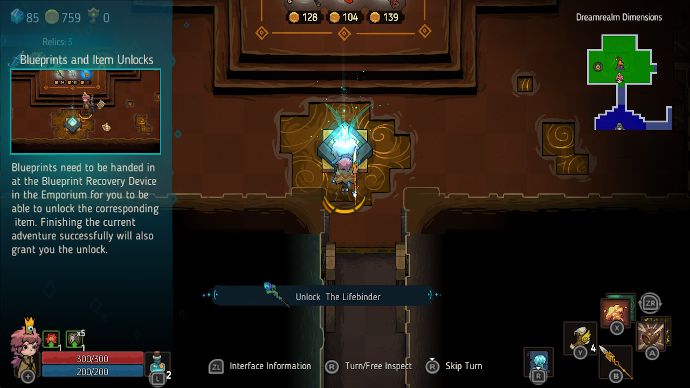
You'll also find Blueprints in dungeons. If you can return to home base without dying, the Blueprints you've collected will unlock new items that you can discover on future runs.
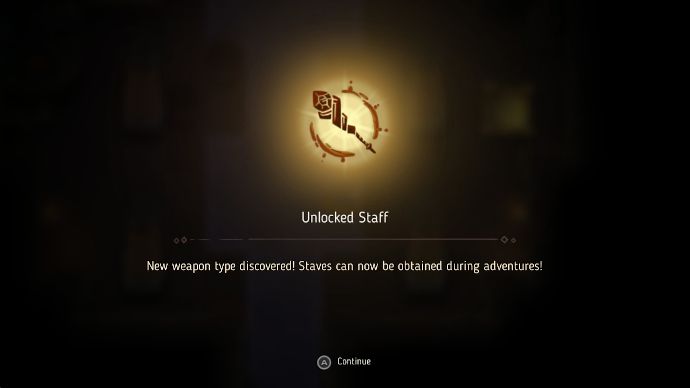
We've seen this kind of mechanic in many roguelites, but it's an effective one and there's a good reason why it's so popular: it's a great way to broaden the game content through repeat plays rather than having everything accessible from the start.
If it ain't broke, keep using it.
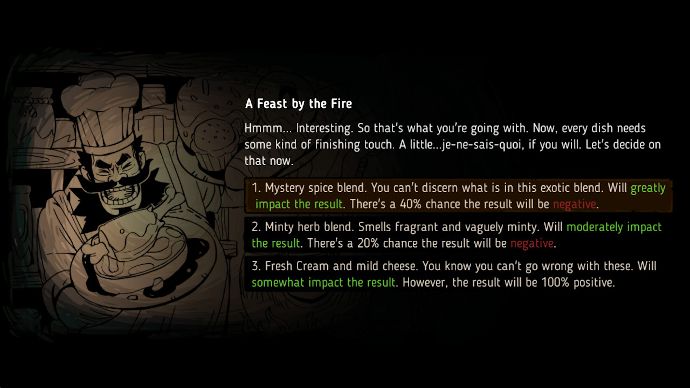
And to make things even more interesting, Crown Trick has special Event Rooms that randomly appear in dungeons.
Examples of event rooms include slot machines, Gashapon vending machines, cursed treasure chests, and choose-your-own-narrative mini-prompts.
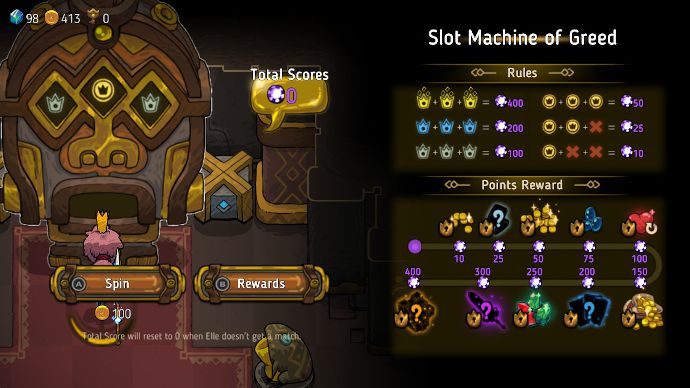
Most of these event rooms boil down to one thing: risk versus reward. How much are you willing to sacrifice in order to secure a potential advantage? They're all fun ways to shake things up, even when they don't go your way.
The Bad
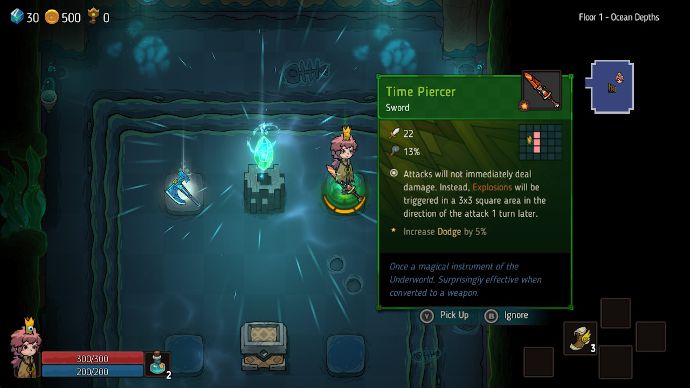
I only have one major complaint when it comes to Crown Trick, and I admit that this is more of a personal preference than anything... but after a while, I'm learning that I don't like the overall itemization design.
Here are a few Weapon examples:
- Axe of Fury: For each enemy you defeat, gain an extra 5 points of Attack for 5 turns, with a maximum of 3 Stacks.
- Trident of Tentacles: Whenever your attacks hit, there's a 10% chance a spout of water damages a random target withing a 5x5 square radius, leaving a Water tile behind.
- Sword of Angelic Accord: Whenever you defeat an enemy with your attacks, you gain a 2-turn Physical Immunity Buff.
I see what they're going for with this type of itemization. They're mostly unique and definitely more interesting than straight +Damage or +HP. The designs are meant to influence the way you approach combat and how you attack enemies.
But in a way, the designs feel extremely... Arbitrary? Situational? Pointless? I can't even count how many times I was given a choice between three new weapons and had no idea how to decide.
I mainly just pick based on the weapon type (e.g. Axe, Sword, Pistol) because they all have different attack patterns—and I really like that part. But the extra bonuses on weapons? For the most part, I ignore them completely.
The use of RNG also doesn't sit well with me, especially when some of the rates go as low as 5%. It goes against the spirit of the game's tactical nature.
How am I supposed to incorporate an effect into my battle plan when it only occurs 1 out of every 20 attempts?
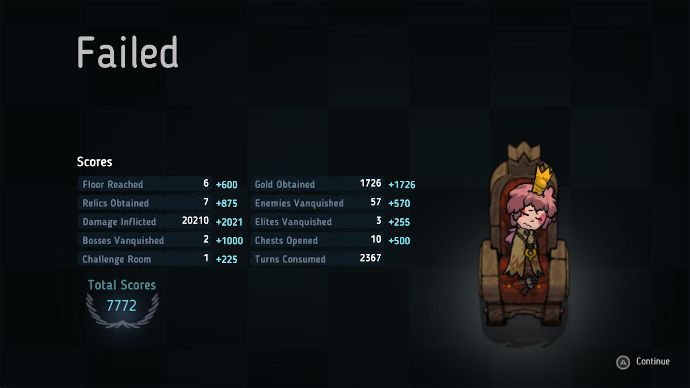
Two other minor complaints that stem from me playing Crown Trick on the Nintendo Switch as opposed to PC:
Poor load times and performance interrupt my momentum when I'm playing. Whether it's moving to the next dungeon floor, completing the dungeon altogether, or even just dying at the Boss... it can take well over a minute to load whatever needs loading before I can play again.
And there are occasional freezes, which I assume happen when there's some procedural generation going on in the background. Not fun when it happens during battle, though!
Are these first-world problems? For sure. But given how many other Switch games I've played and how quickly they load, the wait times in Crown Trick are a real downer. Sometimes it kicks me out of the mood entirely and I end up switching to another game.
Frustrating controls. In particular, the Skip Turn action is bound to Right Stick Press, which is totally fine... except the Right Stick itself is used to examine stuff on the screen.
Perhaps it's just a quirk of the Joy-Con, but whenever I want to skip my turn, I have to fumble for a while because I keep accidentally triggering the examine cursor. Crown Trick already supports Hold L and Hold R for certain actions—I would've preferred if Skip Turn was bound to Hold L+R.
The Verdict
I find that I really enjoy Crown Trick despite its few flaws. Everything about it feels polished and refined, and it's the type of game that I can jump into for 10-15 minutes (clearing one floor at a time) OR I can lose myself in it for an hour or two if I have nothing else to do.
For anyone who likes dungeon crawlers and/or tactical RPGs, Crown Trick is a solid addition and is good enough to keep around even after you beat it. With lots of replay value and fun mechanics, it's a great experience.
Crown Trick
Crown TrickThe Good
- Break, Blink, and Elixir systems add fun twists on traditional tactical RPG combat
- Familiar system provides an interesting, flavored way to expand character abilities
- Permanent character growth between deaths regulates difficulty and frustrations
- Dungeon events and prompts keep things interesting across multiple runs
- High-quality graphics and animations
The Bad
- Item design is hard to analyze, making some decisions feel arbitrary
- Long load times and occasional screen freezes on Nintendo Switch
- Minor control scheme quirks on Nintendo Switch that can be annoying
